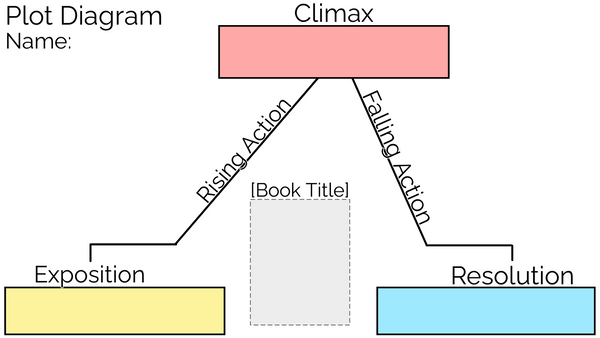

Different lessons require different types of content to help students learn. Here are 10 free graphic organizer templates to use for any subject.

Most students are returning to the classroom in Fall 2021, but everyone’s learning methods have had to change over the past two years. It’s important to adapt as an educator with new techniques, digital materials, and fresh content to keep students engaged.
For any subject, graphic organizers provide effective ways to introduce, teach, develop, and test new material. But different lessons require different types of content to help students learn best. I’m going to give you 10 free graphic organizer templates to use for any subject – just use the Make It button to customize, label, and download your graphic organizer.


The Flowchart is one of the most versatile and recognizable forms of graphic organizer out there, ideal for project planning and science experiments. A goes to B goes to C goes to D. With this version, you can copy and paste sections of the chart to make it as long or as short as you need, label each section with specific details, and add a title and other information for your assignment.


The Timeline is similar to the flowchart, with events spaced out along a single path. In a Timeline, however, the intervals between the events is important to the graphic organizer as a whole. Using this template, you can drag events from one point of the Timeline to another, and add text labels for years and events.


One of the most widely-used graphic organizers, the Venn Diagram provides a simple way for students to compare and contrast 2 or more distinct ideas. With this template, you can copy and recolor the Venn Diagram circles to compare any number of items with each other.


This graphic organizer is most commonly used in elementary and middle school English, language arts, and literature classes. It’s used to identify and map the various stages of a plot arc, from exposition to conclusion. Use this template to title the Plot Pyramid and add any other relevant information you need.


The Brainstorm Chart is a far more freeform type of graphic organizer than most others on this list, and can be arranged almost any way you like. All it requires is a central idea or “problem” to solve, along with an array of other ideas and concepts that are connected to it, and supporting details for these connected points. The freeform nature of the Brainstorm Chart allows students to think creatively and originally on any subject.


The Concept Map is similar in form to the Brainstorm Chart, but with slightly more limitations on how it’s used. It’s used to illustrate the relationships that exist between various related concepts, filling in different sections of the organizer to show how the different parts are connected. The Concept Map is perfect for introducing students to a new set of related vocabulary terms in any subject.


While some of your students may not remember the 5-paragraph essay too fondly years later, it’s an important step in developing their persuasive writing. This classic 5-paragraph planner is perfect for helping students construct their arguments, counter-arguments, supporting data, and conclusions before they put pen to paper.


The 4 Square Writing Chart is similar to the 5-paragraph essay outline, it gives space for looser organizational styles and more creative types of writing structure. The central area contains the main idea or argument, and the surrounding squares are filled with supporting arguments, sections of a narrative essay, personal experiences, or several sides to the same story.


The Story Map is used for a similar purpose to the Plot Pyramid, but with a broader approach to narrative plot arcs. In the Story Map, students not only recount the plot progression of a story, but detail the setting, characters, and central problems and outcomes. There are dozens of ways to organize your own Story Map, so I recommend you use this template to include whatever areas are most important for your students to identify and analyze.


KWL Charts ask students to write on three different things before and after completing a lesson, activity, or reading: what they Know already about the topic, what they Want to learn from the lesson, and, afterward, what they Learned from the experience. It creates more of a big-picture exercise than most of the graphic organizers on this list, allowing students to identify what they gain from their lessons.
I hope these graphic organizer templates help you engage students effectively in every subject you teach. For more tips and tutorials on creating great digital content in 2021, check out the Kapwing YouTube channel or read through some related articles on education materials:

Finding the right balance of tech in the classroom can boost student engagement and learning. So should students be allowed to use cellphones in school? Here's a Gen Z teacher's take on how phones in the classroom can be good, bad, and everything in between.
Zoe Clute Sep 3, 2024
Discover the best Teacher TikTok accounts to follow for the 2024-25 school year, featuring educators who share classroom tips, creative ideas, and teaching humor. Find out how teachers are using TikTok to build community, share resources, and improve their educational practice.
Zoe Clute Aug 27, 2024
Morning announcements can be more engaging if you keep them fresh and incorporate new ideas regularly. Check out our list of fun school news segment ideas to support students in the 24-25 school year.
Zoe Clute Aug 20, 2024Edit videos online, collaborate with your team, and reformat your content to fit every platform with Kapwing's creative studio. Get started now for free.